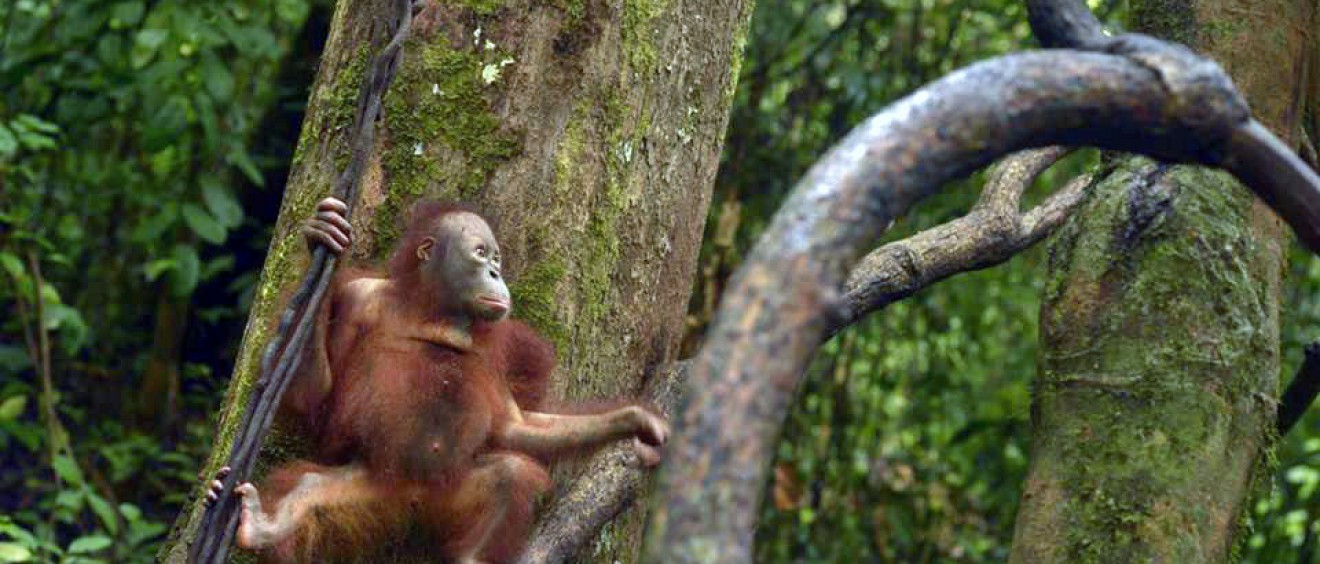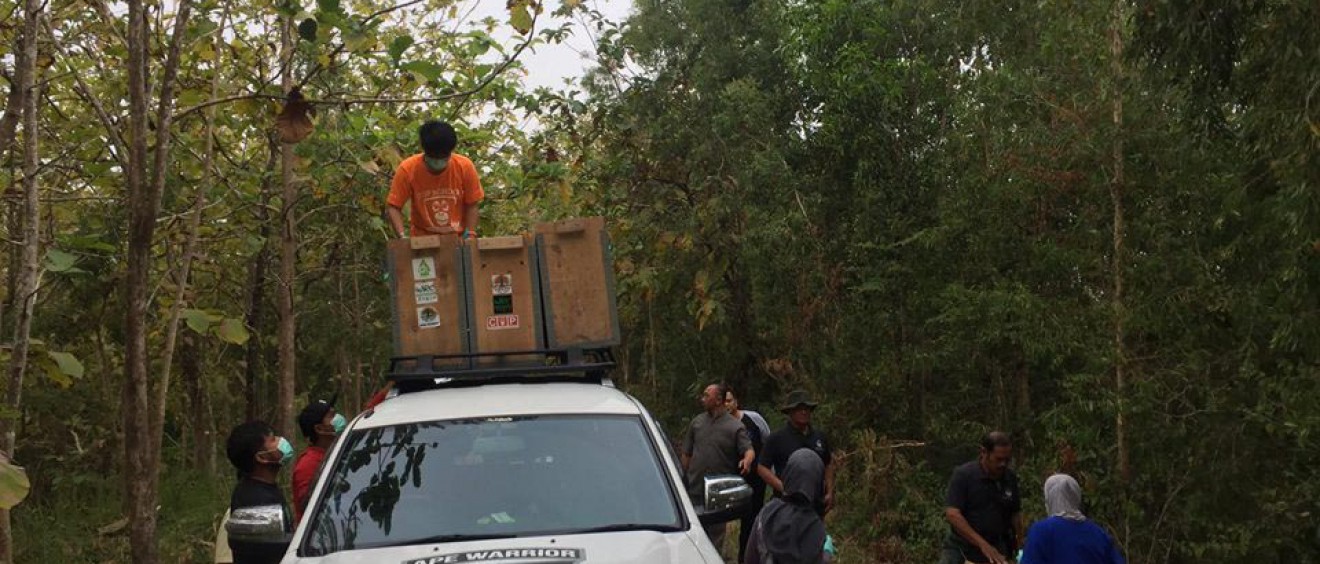Two months ago Annie arrived at the COP Borneo orangutan rehabilitation center, East Kalimantan. “Annie’s behavior for two months had made us believe, Annie would immediately climb a tree and disappear in the canopy. Not only that, but we also estimate we will have difficulty asking Annie back to the cage,” said Reza Kurniawan, a primate anthropologist of COP.
But what we have predicted is missed. Annie looks confused at the forest school. He just walked around the animal keeper and climbed no higher than 3 meters. Yes, this is the first day he is free from the cage.
Annie is a male orangutan who was rescued from Merapun village, East Kalimantan. He was an illegal pet for three years before we rescue him. The owner made his behavior became tame. He was still a baby when the owner brought him, around 1 year old. At that age, orangutan babies suppose to be under parental care. The babies will continue to be attached to their mothers until they are 6 years old. After that, the mother will start weaning her child to live alone. Orangutans are basically solitary animals.
Annie’s first day at forest school will be a special note for us. We hope that COP supporters also follow Annie’s development at COP Borneo and give support to her through https://kitabisa.com/orangindo4orangutan. Wait for her three-month report in August. (IND)
SELAMAT DATANG DI SEKOLAH HUTAN, ANNIE
Dua bulan sudah Annie tiba di pusat rehabilitasi orangutan COP Borneo, Kalimantan Timur. “Perilaku Annie selama dua bulan itu sempat membuat kami yakin, Annie akan langsung memanjat pohon lalu menghilang di dedaunan. Tak hanya itu, kami juga memperkirakan, kami akan kesulitan mengajak Annie kembali ke kandang.” ujar Reza Kurniawan, antropologis primata COP.
Namun apa yang telah kami prediksi, meleset. Annie terlihat bingung di lokasi sekolah hutan. Dia hanya berjalan-jalan di sekitar animal keeper dan memanjat tidak lebih tinggi dari 3 meter. Iya, ini adalah hari pertamanya bebas dari kandang.
Annie adalah orangutan jantan yang diselamatkan dari pemeliharaan ilegal di desa Merapun, Kalimantan Timur. Tiga tahun masa pemeliharaan tersebut membuat prilakunya menjadi jinak. Terlebih lagi di usianya yang masih bayi, saat itu sekitar 1 tahun. Usia bayi orangutan yang sedang berada dalam pengawasan ketat induknya. Anak orangutan akan terus menerus melekat pada induknya hingga berusia 6 tahun. Setelah itu, induk akan mulai menyapih anaknya agar bisa hidup sendiri. Orangutan pada dasarnya adalah mahkluk soliter.
Hari pertama Annie akan menjadi catatan tersendiri untuk kami. Kami berharap, para pendukung COP juga mengikuti perkembangan Annie selama di COP Borneo dan memberikan dukungannya lewat Tunggu rapot tiga bulanannya di bulan Agustus ya.



